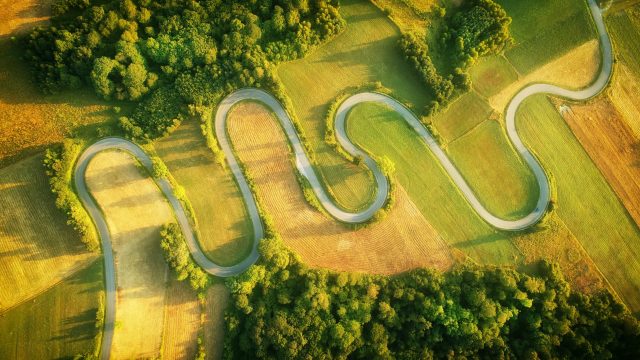The Turkish Riviera is a stretch of coastline that lies alongside the Mediterranean and Aegean seas in the south-west of Turkey. The area is also known as the Turquoise Coast. It enters the provinces of Antalya, Muğla, Aydin, Izmir and Mersin. Running from Alanya at the east end of the Riviera to Çeşme in the west, there are several major settlements to cover. While you could take an inland road to make the trip between the two areas shorter, you’ll be missing out on the fantastic views and coastline.
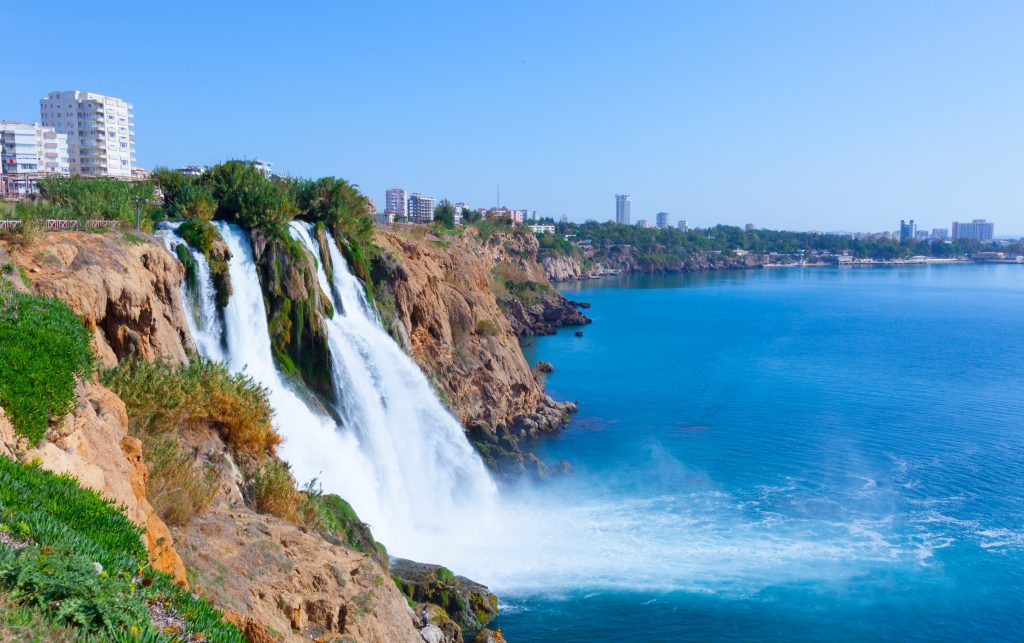 Waterfall, Antalya in Turkey. Photo by: science photo/Stock
Waterfall, Antalya in Turkey. Photo by: science photo/Stock
You’ll want a hire car in Turkey to ensure that you can stop in at whatever sights at your fancy as you travel along, and not be hindered by public transport. You may also want to consider hiring a SatNav or taking your own, as the more areas you want to explore, the more you’ll discover how road signs are either missing or difficult to understand. The smaller, more rural roads may be littered with potholes so drive with caution.
When visiting attractions, generally these are closed on Mondays so be sure to check opening times when planning your itinerary to avoid disappointment.
The south of the country was once known as Lycia, and so is dotted with fantastic ruins that showcase this period. It’s also the home to many myths and legends. Mark Antony gifted Cleopatra the Turkish Riviera as a wedding gift, and Saint Nicholas (Santa Claus) came from Patara. It’s believed that the volcanic mountains near Dalyan were the inspiration behind the fire-breathing monster, Chimera.
We take the D400 coastal road and beyond to explore the Turquoise Coast from Antalya to Izmir.
Is it safe to travel to Turkey?
Before planning to travel, it’s always best to check the advice of the Foreign Commonwealth Office (FCO). They keep a regularly updated website which will advise of any current risks in the country you’re travelling to. If you’re concerned, take a look at our guide about whether it’s safe to travel.
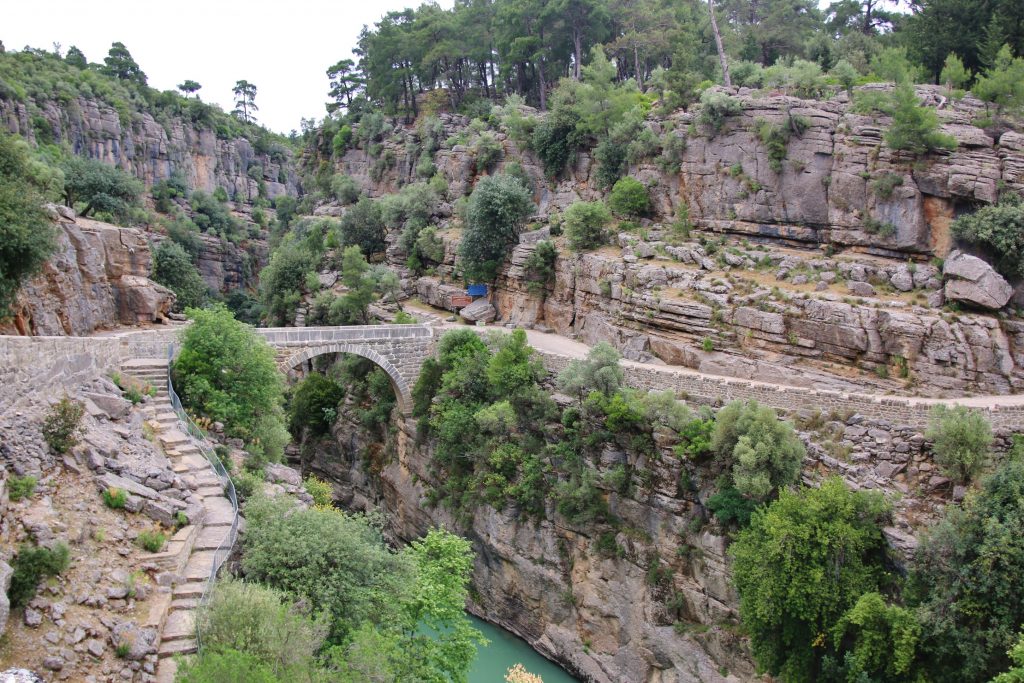 Köprülü Canyon, near Antalya in Turkey. Photo by: dtatiana/Stock
Köprülü Canyon, near Antalya in Turkey. Photo by: dtatiana/Stock
Do I need a visa to travel to Turkey?
British nationals will require a visa to enter Turkey. Only use the official visa website as other unauthorised sites may charge unnecessary fees or issue fake visas. If you’re a national from another country, you can check the FAQS provided here to see if you need to apply for a visa.
A Turkish Riviera road trip
Typically, driving from Antalya to Fethiye via the scenic route (D400) will take around 5 hours. However, you’re sure to want to stop to take in some of the sights and attractions which could increase your travel time by a few days, at least 3. There are many coastal coves, bays, beaches, and ruins to discover. If you’re just looking for somewhere nice to drive, then it’s still worth the trip.
Antalya
Located right along the Mediterranean coast, this is a hive for tourist activity. It’s the largest city in Turkey that benefits from such a great Mediterranean position.
Thrill-seekers or those looking for an excitement boost should visit Köprülü Canyon, a National Park about 57 miles from Antalya, where you can take a white water rafting guided tour. The canyon hugs 14km along the Köprü River and the park provides many great opportunities to experience the true wild beauty of Turkey. Visit Beskonak town to get yourself booked on the rafting tour. See Oluk Bridge which crossed the river, a fine example of Roman engineering which was built in the 2nd century AD.
15km east of Antalya lies the ruins of Perge, or Perga, the capital city of the former region of Pamphylia. There have been many discoveries and evacuations on the site since 1946. Take your hire car the short distance to wander the site as much as you like (there’s a lot to see!), or park in Aksu to walk the final 15-20 minutes. Be sure to take bottled water with you on your visit.
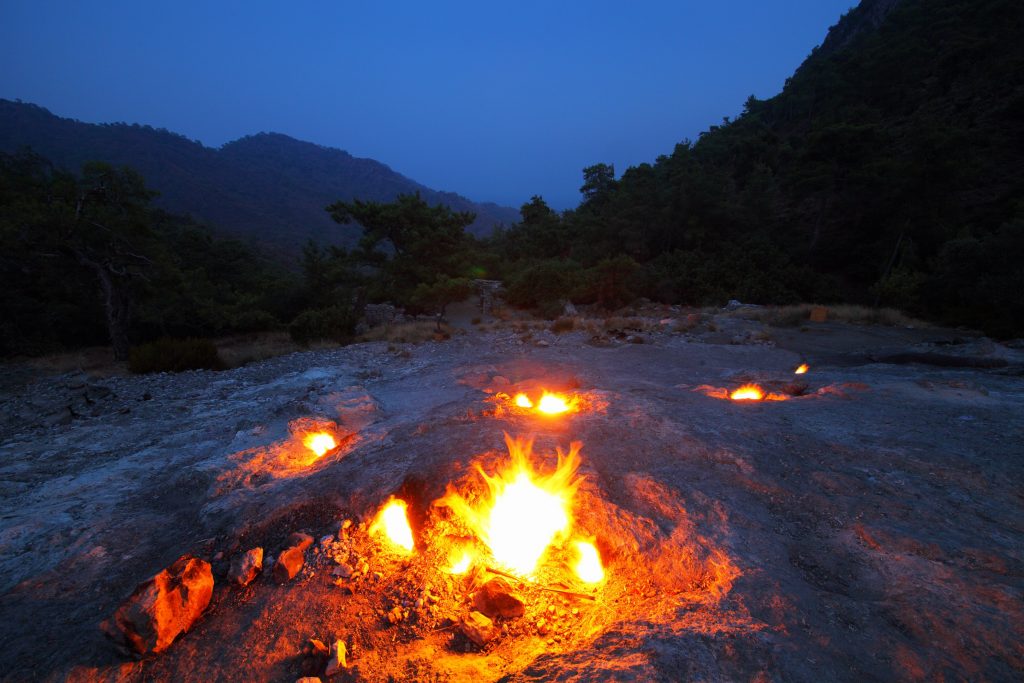 The everlasting flames located on Mount Chimaera. Photo by: yurybirukov/Stock
The everlasting flames located on Mount Chimaera. Photo by: yurybirukov/Stock
Çıralı
Perhaps unknown to many, it’s said that the everlasting flames here inspired the monster, Chimera. In fact, the mountain on which they’re located is called Mount Chimaera. Gaps in the ground release a gas mixture that continues to burn. For a small fee, you can access the site after a hike from Çıralı. Good walking shoes are a must, plus a torch if you’re travelling in the dark (which can be better as the fires have a greater impact).
While in the village, visit the ruins of Olympos, an ancient Lycian city. The modern-day Olympos adjoins Çıralı, which is about 3km away, up the beach and just a short way inland. Due to the tree growth, it can be a little difficult to navigate the ruins and locate everything, so it’s worth checking this map as you explore. There is a little entrance fee, which helps cover the maintenance of the site and upkeep of the information boards.
From Çıralı to Demre, be sure to rest a while at Adrasan Bay. It’s a tranquil beach and is worth a stop.
Demre
Here, be sure to visit the tomb and Church of Saint Nicholas, known as Santa Claus. There are also Lycian and Roman ruins, including rock tombs, an outdoor theatre, and Myra.
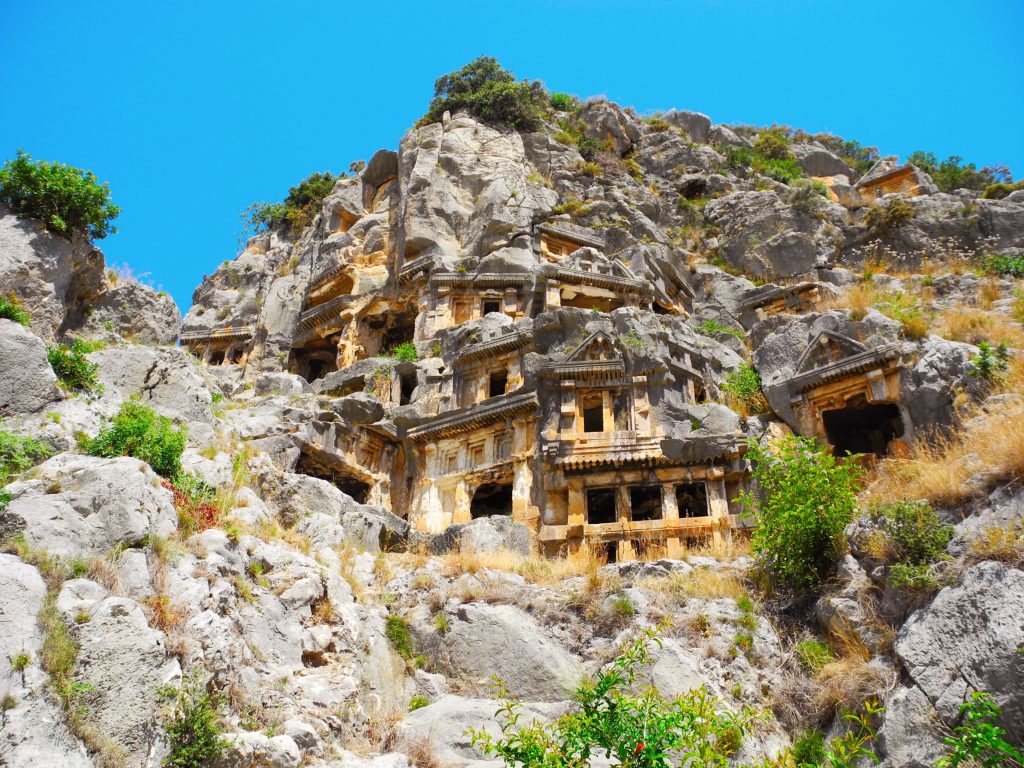 Rock tombs near Demre. Photo by: jana_janina/Stock
Rock tombs near Demre. Photo by: jana_janina/Stock
Kaş
Visit further Lycian tombs, as well as the Antiphellos theatre. Stroll among the pretty Greek architecture.
Saklıkent National Park
Take a detour from the D400 near Xanthos and head inland to the Saklıkent Gorge. At 18km long and 300m deep, it’s one of the deepest canyons in the world. During winter months (November to March), the water level in the canyon rises but is walkable the rest of the year. It’s possible to hire a rubber ring to float down the river on. There are several eateries located in the gorge which provide respite from your walk. Remember that you’ll probably get wet and will be required to walk through at least a small amount of water so wear appropriate shoes for the occasion.
From the gorge, head north to the Tlos ruins; what’s left of a theatre, stadium and tombs, among other structures. These ruins are the remainder of what used to be one of the six main cities of Lycia. It rests on the east side of Xanthos valley and provides some spectacular views.
Fethiye
You’ll want to base yourself in Fethiye for a day or two to make the most of the attractions around you. Visit the Old Town, called Paspatur. Climb to see the Tomb of Amyntas and take in the stunning views of the marina and the bay area.
It’s worth visiting Uğur Mumcu Park, a gorgeous park dedicated to the late journalist Uğur Mumcu who was assassinated in 1993 in Turkey. As night-time falls, there is often a coloured light show at the fountain in the park, illuminating the water in a pretty display.
 Rock tombs near Demre. Photo by: jana_janina/Stock
Rock tombs near Demre. Photo by: jana_janina/Stock
Get a better grasp on the history of the region at Fethiye Museum. Once a Greek Orthodox Church and a mosque, the museum houses many artefacts relating to Lycian and Roman times. Descriptions of some items are missing, and it can be difficult to find, but it’s worth exploring regardless for the small entrance fee.
Visit Umbrella Street, which is pretty much as described. Walk under a roof formed from opened umbrellas, located near the Migros supermarket. Here you can rest a while with a coffee from one of the many cafes under the umbrellas. You’ll definitely want to stop for a photo or two.
For bathing and relaxing on the beach, stop off at Aksazlar Bay, Samanlik Bays, and Kuleli beach. You should bag yourself an ideal spot come sunset at Çalış beach; you won’t regret the view! Alternatively, there’s the nearby village of Ölüdeniz, south of Fethiye, home to arguably one of the most photographed beaches in the world. In peak holiday season, expect these beaches to become busy after 10am. Sundays should be avoided unless you don’t mind the crush as this is when Turkish families will head to the shore.
On the way back from Ölüdeniz, explore Kayaköy, a ruined village that you can wander and marvel at what’s left behind. A real ghost town!
A little further afield beyond Ölüdeniz is Babadağ, a mountain with the elevation of 1969 metres. It’s possible to get a dolmus (a type of minibus) to the top, where you’ll be rewarded with breath-taking views. There are plans in place to build a cable car to make access to the top easier. There’s a little restaurant near the summit where you can enjoy a drink or a meal, taking in the views around you. For those more motivated by an adrenaline rush, the top of the mountain is where paragliders take off, and you can too.
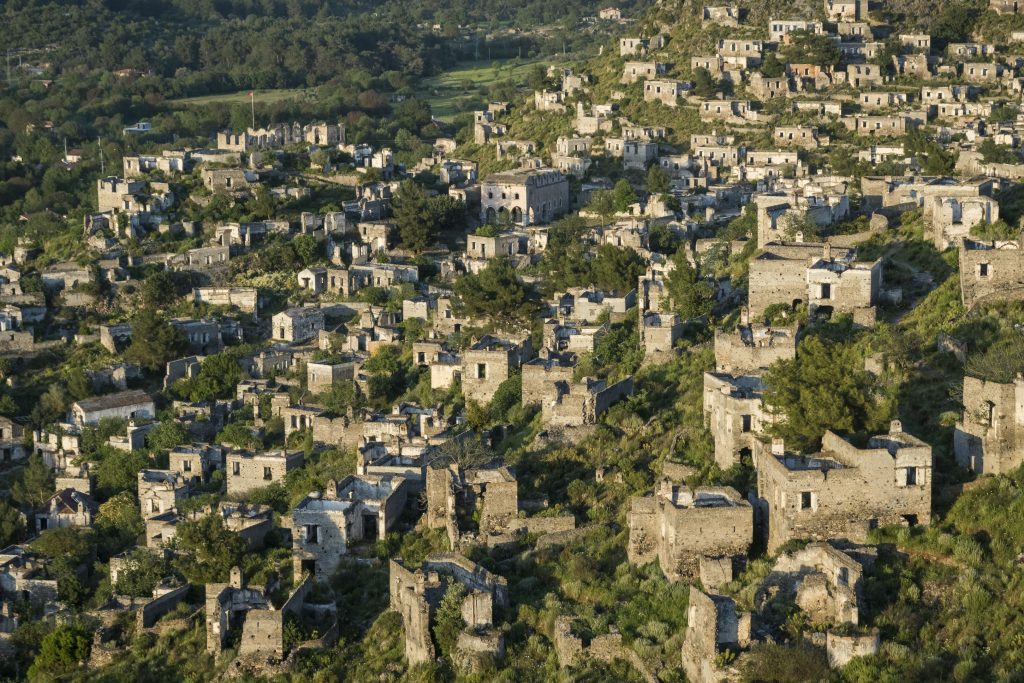 The abandoned village of Kayaköy. Photo by: Xavier Allard/Stock
The abandoned village of Kayaköy. Photo by: Xavier Allard/Stock
Marmaris
This port city is a base for heavy tourism. Set out to Heaven Island and visit Nimara Cave, once used as a place for worship.
There’s great nightlife here with many clubs and bars available. Relaxing on the beach is also a highlight, with a range of facilities on offer. For a quieter getaway, take a trip to Datca. Alternatively, head out on a boat to take a tour of the coast.
There are PADI registered diving schools along the front which can help anyone wanting to grow some gills and start diving; there are many diving spots in Marmaris.
Those looking to discover the natural beauty of the area should take the Carian Trail. It’s 800km in total through ancient villages taking old shepherd tracks. If you’re to do the whole trail, expect it to last around 5 days. You can find full details of the route here.
Bodrum
This port city was once home to one of the Seven Wonders of the Ancient World; the Mausoleum at Halicarnassus. It was a tomb built between 353 and 350 BC for a satrap, or governor, Mausolus and his sister/wife. It became destroyed by a series of earthquakes and by 1404, much was unrecognisable. During the construction of Bodrum Castle, many of the bricks were used from the mausoleum debris in the castle walls. It was later that the tomb was discovered, and upon opening, found to have been struck by grave robbers. Several of the statues from the tomb were used in the castle, with others on display in the British Museum, and further bricks were used to build a dock in Malta during the 19th century. There’s a small museum in the castle grounds that details the interesting history of the mausoleum.
The 15th century Bodrum Castle, or Castle of St Peter, overlooks the harbour. The castle is home to the award-winning Museum of Underwater Archaeology, which holds some discoveries from shipwrecks of the Aegean Sea. There are also two reconstructed shipwrecks.
As you explore Bodrum, you’ll notice the 18th century white-painted windmills that stand solitary, no longer grinding flour.
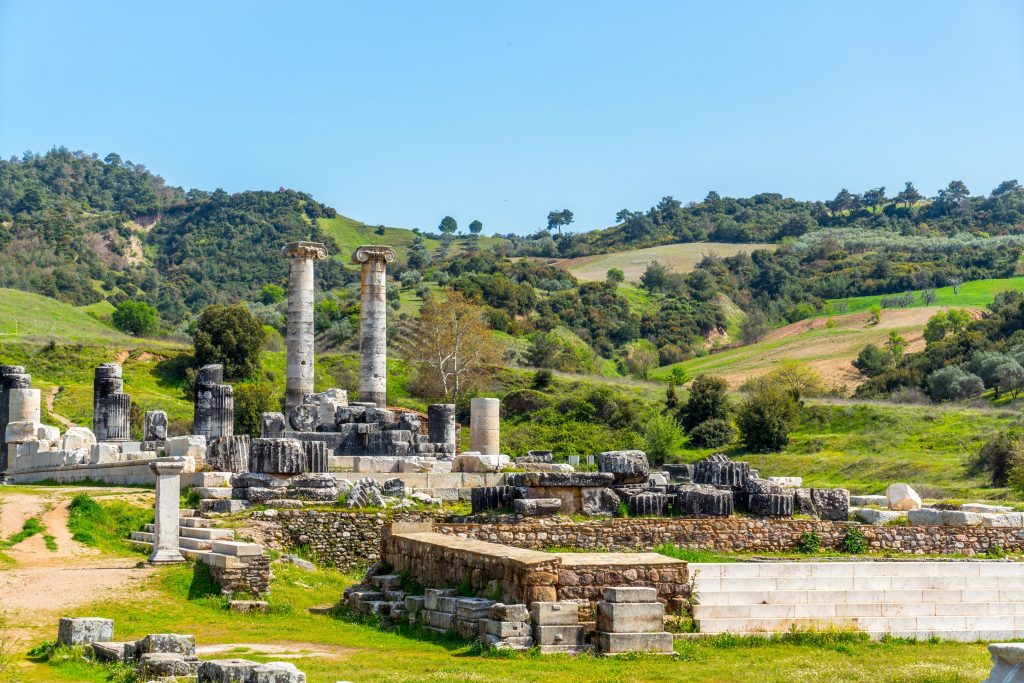 The ruins of the Temple of Artemis, one of the Seven Ancient Wonders of the World. Photo by: okanakdeniz/Stock
The ruins of the Temple of Artemis, one of the Seven Ancient Wonders of the World. Photo by: okanakdeniz/Stock
The nightlife here is also great for those looking to party, with many clubs along the shorefront. Try Halikarnansus; a large outdoor nightclub.
Scuba diving is a popular recreational activity in Bodrum as the waters are so clear, visibility is perfect for beginners and pros.
It’s possible to walk out to Rabbit Island along the Mindos Wall when the water is only ankle deep. Although you won’t be able to go onto the island while there’s archaeological works being undertaken, there’s still ruins under the water that you can see by snorkelling. Plus, it’s incredible to get that ‘walking on water’ feeling.
As you leave north-bound for Izmir, call in at Selçuk. You’ll be able to locate the remains of the Temple of Artemis nearby, another of the Seven Wonders of the Ancient World. This Greek temple was built in what was then called Ephesus, now Selçuk. It was rebuilt three times, after it was destroyed by a flood and then arson. In its final form it was named one of the Seven Wonders. What remains now is the base and foundations.
İzmir
This is the most populated city on our road trip; the third most populous city in Turkey, after Istanbul and Ankara.
Visit the Agora Open Air Museum of İzmir; the remains of the Greek city of Smyrna. One of the most exciting discoveries here was the graffiti found, said to be the largest example of Greek graffiti in the world.
Stop by the harbour to have a look at the impressive marble Clock Tower. Four water fountains circle the clock to make it even more attractive.
There’s the protected İzmir Bird Paradise in Çiğli, a district of İzmir, and the Sasalı Park of Natural Life, an open-air zoo. The bird sanctuary has almost 300 species of birds, some of which are migratory so can’t be seen year-round.
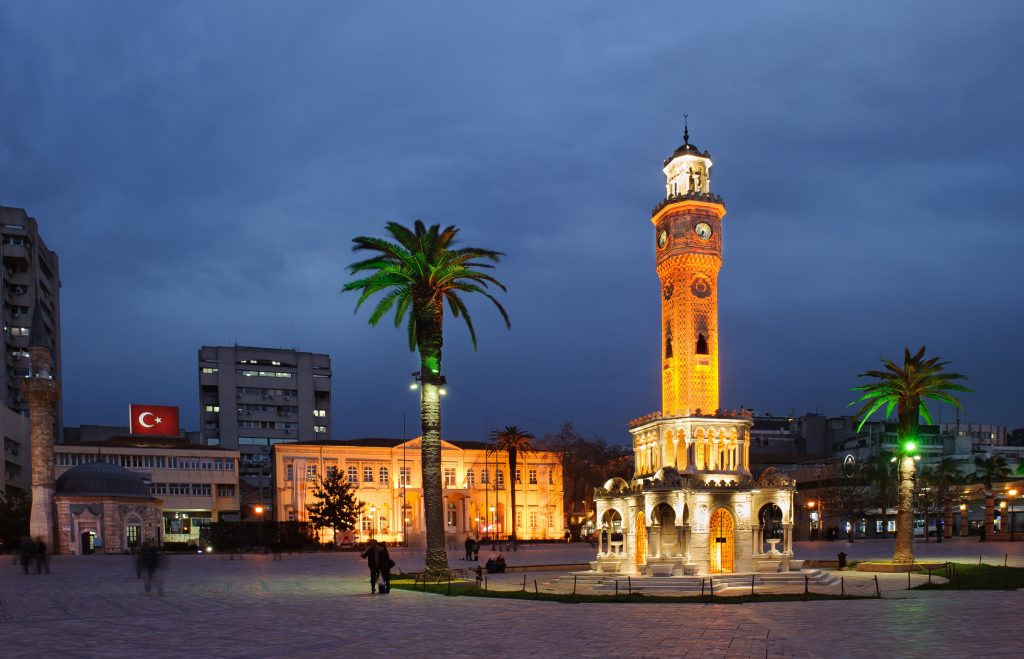 The Clock Tower in Izmir, Turkey. Photo by: great_photos/Stock
The Clock Tower in Izmir, Turkey. Photo by: great_photos/Stock
Your south-west Turkey road trip
Zest works with car rental providers at several airports across Turkey, including İzmir Airport, Antalya Airport, Bodrum Airport, and Dalaman Airport, among others. These are all conveniently located near this south-west section of Turkey, so your Turquoise Coast adventure can begin as soon as you arrive.
If you’ve taken this route before, or have travelled to this part of Turkey, what advice would you give or what locations would you recommend to others making this road trip? Let us know in the comments below.
Make sure you follow us on Twitter and Facebook for the latest travel tips and news. Remember to sign up to our newsletter below for the latest deals.
Subscribe to our newsletter
Want our blogs emailed direct to you? Sign up below to get updates featuring our blogs and car hire top tips. Receive the best deals on car hire straight to your inbox.



